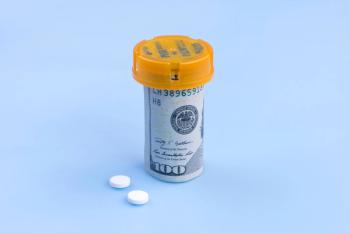
Synchronization, Communication, Staff Participation Boost Sales and Help Patients
The final installment of this 3-part series on medication management services delves into the process of providing clinical care in the pharmacy.
D
elivering clinical services doesn’t start with the patient walking into the pharmacy or talking with the pharmacist. Clinical care begins long before. Existing programs such as medication synchronization and Medicare Part D’s Medication Therapy Management (MTM) can help. Medication synchronization serves 2 purposes. Enrolling 30% to 50% of chronic patients in an appointment-based refill program frees up a significant amount of pharmacist time compared with walk-in refills, according to Cody Clifton, PharmD, director of clinical services at Duvall Family Drugs in Duvall, Washington, and director of practice transformation and clinical programs for Community Pharmacy Enhanced Services Network (CPESN).
Regular, scheduled follow-ups then pave the way for other clinical services. “Reaching out to patients 7 to 10 days in advance of every refill lets you take services to the next level by asking straightforward questions about medication changes, changes in health, vaccinations, testing, and all the other ways we can help,” Clifton said.
Many independent pharmacies use Outcomes MTM’s standalone Part D MTM program. The program boosts nondispensing cash flow and can help identify patients who need more than a compre- hensive medication review (CMR). “We sometimes use that CMR to identify patients [who] could benefit from other services,” said Tripp Logan, PharmD, vice president of SEMO Rx Pharmacies, which has pharmacies across 3 counties in southeast Missouri.“From a value standpoint, we don’t see a ton of clinical value in 1 visit because these patients are complex enough that they need more than 1 intervention a year. That CMR is an identify clinical needs. The payer or network can forward patient contacts or selection criteria directly.
“Our program identifies patients who are part of a certain health plan, have disease states within certain date ranges, or [have] other criteria,” explained Farah Madhat, PharmD, executive vice president at PrescribeWellness.“We try to empower community pharmacies to run their own clinical programs. And once you’ve identified that population through software, you can send out singular communications to only those select patients.”
Make the Contact
Other pharmacies use social media to drive demand. Traditional media can also be effective, depending on cost.
“We do a lot of social media and radio advertisements for the pharmacy,” said Martika Martin, PharmD, MBA, director of clinical services at Danhauer Drugs in Owensboro, Kentucky.“We mostly use Facebook, which is hugely successful in our area. Our pharmacy has been here since 1904, so people are used to coming to the pharmacist with questions. And when they’re asking questions, they are asking you to help make their lives better.”
How to follow up on those initial contacts depends as much on the pharmacist as it does on patients. Some pharmacists would rather spend time calling patients directly rather than using robocalls, as some patients dislike prerecorded calls.
However, Madhat said Prescribe-Wellness metrics suggest that phone messages recorded by the local pharmacist with follow-up by text messaging can be highly effective in bringing potential patients into the pharmacy and reminding them of existing appointments. Email is generally less effective.
“We already have the phone number from the health plan, and a voice message really reinforces that connection and drives them to come in,” she said. “We’ve started using texting for intake components, texting them a link to provide some of the information before they ever come in. And in the pharmacy, they can scan a QR code and do some of the preappointment work It saves everyone time.”
Involve Staff
Support staff also play key roles in clinical work by identifying patients due for refills, consults, vaccinations, or other services; making phone calls; retrieving patient files; and watching for opportunities.
“If you have good communication with your staff and they have a clear understanding of your clinical vision, they can help,” said Tammy Bullock, PharmD, BCACP, clinical pharmacy coordinator for Osterhaus Pharmacy in Maquoketa, Iowa.“They can spot a MedWise patient or an OutcomesMTM opportunity and alert the pharmacist. A growing number of states allow certain technicians to administer vaccines, a move that accelerated during COVID-19.
“When you get vaccinated in a physician’s office, who provides that vaccine?” asked Josh Howland, PharmD, MBA, vice president of clinical strategy at PioneerRx. “It’s the medical assistant, maybe the nurse.
Providing clinical services takes time, which is why appointment-based sched- uling matters. A scheduled visit gives the pharmacist time to review the patient file, gather any educational materials, and prepare for the encounter. But convincing patients to make and then keep appointments can be challenging.
“[COVID-19] has made that easier. People were asking, ‘Exactly what time do you want me in the pharmacy?’ That experience helped change attitudes about making pharmacy appointments,” Martin said.
It’s crazy to pay your most expensive resource to provide a vaccine. So if your state allows, make sure your techs are certified to administer immunizations and let them do it. Every- one in the pharmacy—you, the techs, other support staff—should be practicing at the very top of their license.”
Involve Patients
Providing clinical services takes time, which is why appointment-based scheduling matters. A scheduled visit gives the pharmacist time to review the patient file, gather any educational materials, and prepare for the encounter. But convincing patients to make and then keep appointments can be challenging.
“[COVID-19] has made that easier. People were asking,‘Exactly what time do you want me in the pharmacy?’ That experience helped change attitudes about making pharmacy appointments,” Martin said.
Osterhaus Pharmacy tries to arrange appointments but also builds time into pharmacists’ schedules just in case. “We ask if they have a few minutes to talk, and most of the time, they do,” Bullock said.“If not, we ask about a more convenient time or offer to call them at home at a specific time. Having that flexibility to sit down for 15 minutes is a priority in our workflow and our staffing plans. That’s why MedSync is so important to clinical workflows. If I know this patient is coming in tomorrow, I can prepare my action plan ahead of time.”
COVID-19 Pandemic Takeaways
COVID-19 has been a stress test for health care, and pharmacy is showing solid results.
“We vaccinated the first health care professionals in our country along with the hospital,” Bullock said.“We talk with physicians on the phone all the time, but they almost never step into the pharmacy. Being on the receiving end of services helped them see why we are so different.”
Kentucky is one of the states requiring pay parity with other providers.
“[COVID-19] was a catalyst for passing provider status in Kentucky,” Martin said. “Commercial insurers are now required to pay the pharmacy the same for services that they would pay any other provider. That’s a real boost for patient care.”
The critical takeaway from COVID-19 is that pharmacists have the flexibility and training to provide direct patient care, track their interventions, and deliver solid clinical outcomes. All they need are regulatory approval and assured reimbursement.
“[COVID-19] blew the door open on clinical services in pharmacy,” Howland said.“Pharmacists showed they are the one provider in the country willing and able to mobilize quickly to provide services at scale. It’s up to pharmacists to walk through that door now before it shuts.”
Newsletter
Pharmacy practice is always changing. Stay ahead of the curve with the Drug Topics newsletter and get the latest drug information, industry trends, and patient care tips.





















































































































































